Bilbao
Camino del Norte
The Guggenheim Museum of Bilbao, a building voted for and funded by its citizens, was the first step in putting this historically industry-bound city on the tourist map. Since its opening in 1997, the city has grown rapidly to accommodate the explosion in visitors.
It is a large city, and while the old town can be seen in an afternoon it would take two days minimum to get around the new town. If you are crunched for time or want to go easy on your feet there are plenty of public transport options; you would do right to avoid the quality metro and stick to the above ground Euskotran tram line (lime green line on the map) which allows you to see the city as you move through it. It follows the 3rd option out of Bilbao and goes as far as the Basurto Hospital on the 1st option.
As museums go, the Guggenheim is not the only gig in town. Nearby is the Bilbao Fine Arts Museum where you will find more religious paintings (and paintings in general). The museum is at the edge of the Doña Casilda Iturrizar Park, which along with the Plaza Nueva and the Plaza Miguel de Unamuno, are great places to relax; though the latter two will do more to fill your belly.
The Basilica de Begoña (formerly dedicated to Santiago) is passed as you descend into Bilbao, which is fortunate because most tourists have to make the climb up to it.
The more notable and accessible monuments are the Cathedral de Santiago (the only Cathedral consecrated in his name), the Iglesia de San Nicolas, the Parroquia de San Anton (which with the bridge adjacent both appear on the Bilbao Coat of Arms), and the Iglesia de los Santos Juanes (Jesuit Baroque).
The main festival of Bilbao is known as La Semana Grande (though you will more likely see posters for ‘Aste Nagusia’); it celebrates the Assumption of Mary on the 15th of August. The 9-day celebration kicks off the following Saturday.
Though settled by the Romans, the modern city of Bilbao didn’t really take root until the 14th century, alongside the majority of cities along the Basque coastline.
Within a few centuries iron ore would be discovered in the mountains nearby and the city would achieve a level of industrialization unseen anywhere else in Spain. That growth lasted through the civil war and it wasn’t until the 1980s that globalization began to put the economy in a bind. The government reacted quickly, and the economy driving the city as you see it now is fueled by the service industry.
The route through Bilbao is not singular. Indeed if you spend any time wandering off the camino (and you should) you are likely to find yellow arrows pointing a way. There is no wrong way, but there are many.
There are essentially three different options ahead; all routes cross the river near the Iglesia de San Antón to leave the old town over the cities oldest and most frequently rebuilt bridge, the Puente de San Antón.
Option 1: The Official Camino
The official camino turns away from the river and crosses the city due west along one of its busiest Avenidas. As it nears the Basurto Hospital it splits, creating the second option below. To keep on the official camino requires you to cross the road to your left to follow a road uphill a short distance before crossing left again to get to the nearby stairs which will take you around the hospital and set you on a course to pass underneath the A-8. From here the camino begins to climb up to the municipal albergue, which is located well out of town on the hillside overlooking the city. The idea here is to go up and over the hillside.
Winding down the other side you will pass under a highway and then over a river before climbing up another hillside. On the other side of this second hill you will descend into Barakaldo, passing several of its suburbs as well as the very large Bilbao Exhibition Center. The camino is well marked and winds its way through the center of Barakaldo. It will eventually bring you to a riverside pedestrian path. Not far ahead, where the path bends to the right, is a confusing split. There is an option at this point to cross the river (left, marked Sestao) and more or less avoid both Sestao and Portugalete altogether, by following a path along the river just to the south of both cities. The option is shorter and flatter and it follows a cycle path. Otherwise, the official camino bends right to follow the river and crosses into Sestao at a different bridge.
Option 2: Through Bilbao but avoid the hills - A new route
Possibly the least traveled option, this route follows the official camino as far as the hospital but keeps on the N-634. It is considerably flatter than the official camino, and only half as long. It is also recently waymarked so you may find it to be more commonly used by the time you get there. It essentially follows the west bank of the river all the way to Sestao, bypassing Barakaldo.
Option 3: Direct to Portugalete on the east bank
After crossing from the old town to the new town, simply follow the road that follows the curve of the river (which means turn right at the end of the bridge). You are essentially walking counterclockwise around Bilbao and will pass the Guggenheim Museum along the way. Beyond the museum you walk through a city park, and cross back over the river at the second bridge. Access to the bridge is elevated, so wind your way up the helical ramp. Once on the other side, wind back down to the road level and head towards the river. From there follow along the park path adjacent to the river. Where the park ends the camino turns to the right (north) at a large roundabout and then left onto the Calle Morgan. A few blocks later the road bends to the right and heads into a tunnel; at the same time the camino is above the tunnel, which is obvious when you see it. At the next road it turns left and then right again, taking you around a large sports complex.
Before long you will arrive at another busy road and turn left. From that turn it is a more or less straight path all the way to the Viscaya Bridge over the river and into Portugalete. This last section follows close to the river and passes through several industrial parks; these are perhaps the only downside to this route. The bridge over the river into Portugalete is probably the highlight of the route. The locals call it the hanging bridge (puente colgante) and it is the first of its kind ever to be built, a distinction which earned it a UNESCO World Heritage Site designation. It operates every 8 minutes.
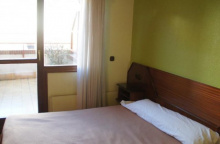
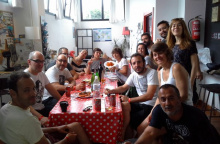
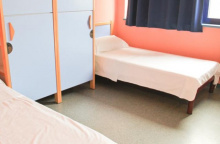
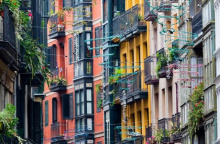

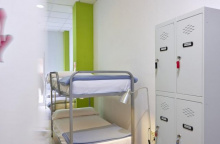
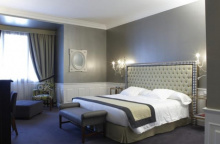
Comments